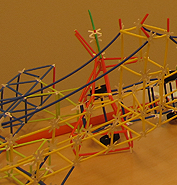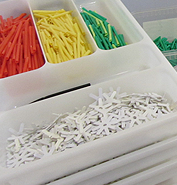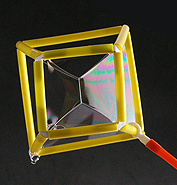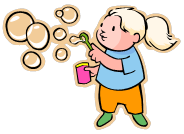4DFrame Activity Tips:
9. Soap bubbles in three-dimensional shapes
Build cubes, pyramids, and more and ”fill” them with soap bubbles.
KomTek in Järfalla is a Swedish science- and technology-oriented activity centre
that regularly uses 4DFrame materials in its programs both in-house and with local
schools. Anna Nytomt Kristensson is one of their staff who works with this and she
shared this set of activity tips KomTek developed (thank you, Anna!) for using this
educational teaching tool.
9. Soap bubbles in three-dimensional shapes
Build cubes, pyramids, and more and ”fill” them with soap bubbles.
Main concepts 1-3 mathematics:
- Basic geometric objects including points, lines, line segments, quadrilaterals,
triangles, circles, spheres, cones, cylinders and cuboids and their mutual relations.
Basic geometric properties of these objects.
- Construction of geometric objects.
Main concepts 1-3 technology:
- Materials to be used for making your own designs; their properties and how they
can be connected together.
Main concepts 4-6 mathematics:
- Basic geometric objects, such as polygons, circles, spheres, cones, cylinders,
pyramids, cuboids and their mutual relations. Basic geometric properties of these
objects.
- Construction of geometric objects.
Main concepts 4-6 chemistry:
- Water’s properties and circulation system.
Preparation:
- Make a soap bubble solution...
8 deciliters water
2 dl concentrated dish detergent
(optional - 0,5 dl glycerine and a pinch of sugar)
- Gently mix the ingredients together. Let the soap bubble solution stand overnight
so that it becomes extra thick. The result can be better if you use distilled water
(available to buy at a gas station).
- A soap bubble is a very thin layer of water sandwiched between two layers of detergent.
The detergent allows the surface tension to decrease, which forms a bubble. You can
make soap bubbles with plain soap and water, but the bubbles are not as durable.
The water in the bubble runs down, which causes the bubble to eventually break. Sugar
and glycerin makes the water become "stickier" (has a higher viscosity) so that it
can form larger bubbles that last longer.
- Discuss surface tension; do experiments about it.
Soap bubbles with 4DFrame:
- Build pyramids and cubes and dip them into the soap bubble solution. Be careful
when you dip, for example, the cube into the solution as otherwise it will not get
the special "shape" of the soap bubble.
- Build different geometric objects and see if you get other shapes of soap bubbles.
- Why are soap bubbles always round when you blow them away?
- A round soap bubble keeps its shape because the air pressure inside the bubble
is the same as air pressure outside of it.
Video clip about the form of soap bubbles:
http://www.svtplay.se/klipp/177854?type=embed
See page 87 in the 4DFrame activity book.
Follow-up:
- Build your own soap bubble “wands” with various geometric forms bent into one end
of own material, such as pipe cleaners, yarn, wire, florist sticks. Dip them in the
soap bubble solution and see what happens.
- Do more experiments on surface tension and water's other properties.
Top of page
©2013-2015, Nordic4DFrame AB
Grönviksvägen 6, 185 41 Vaxholm, Sweden






